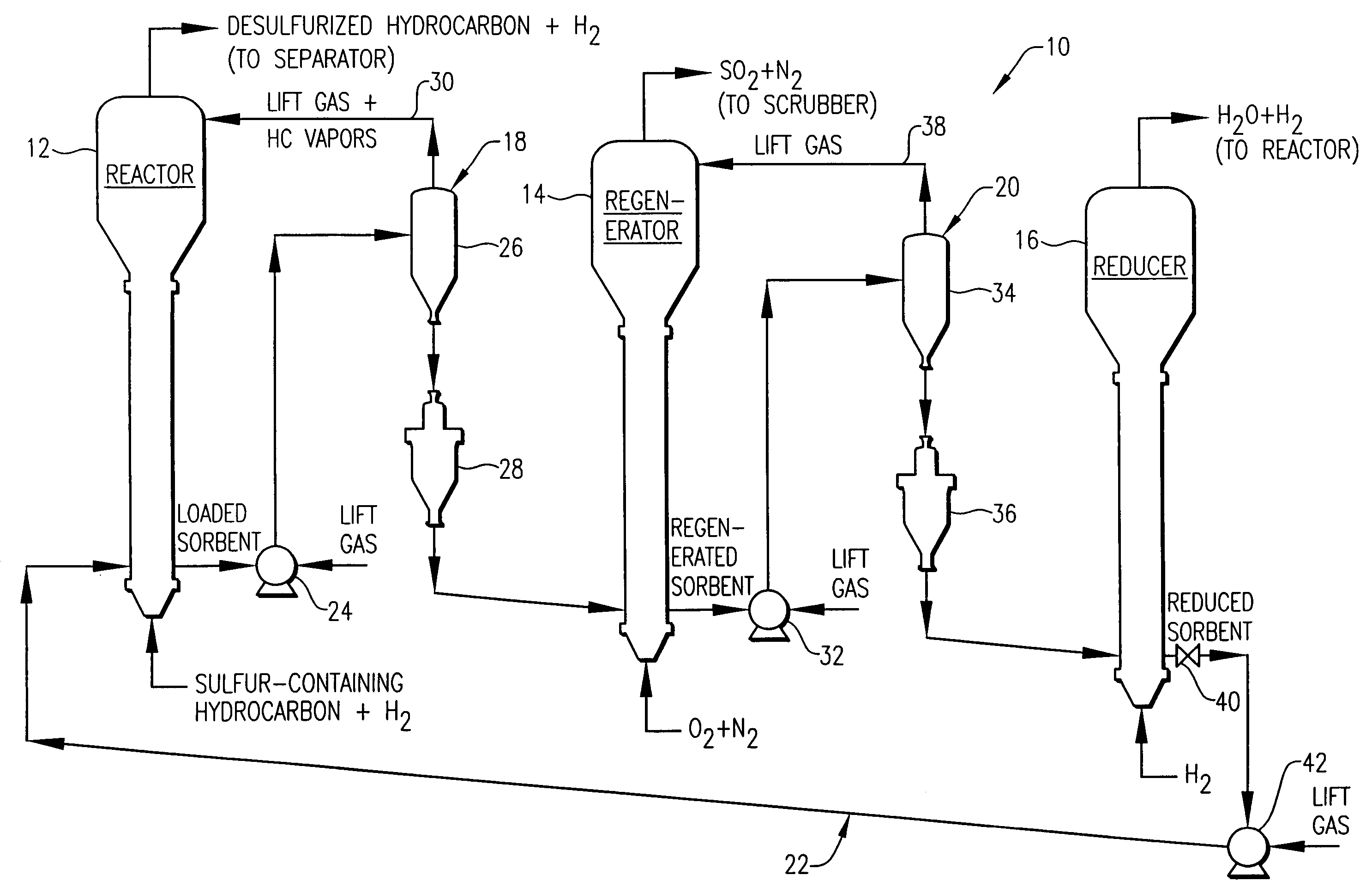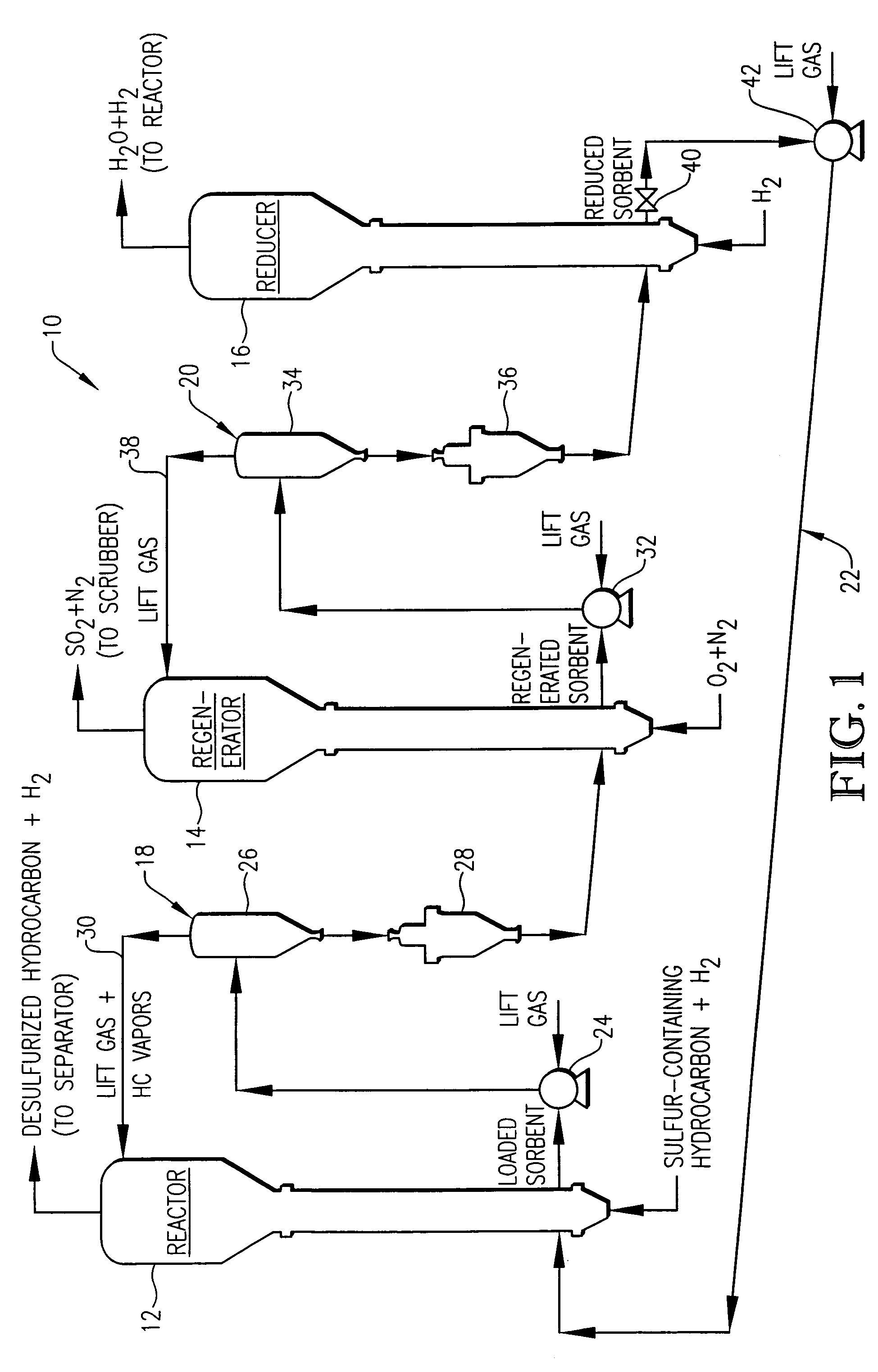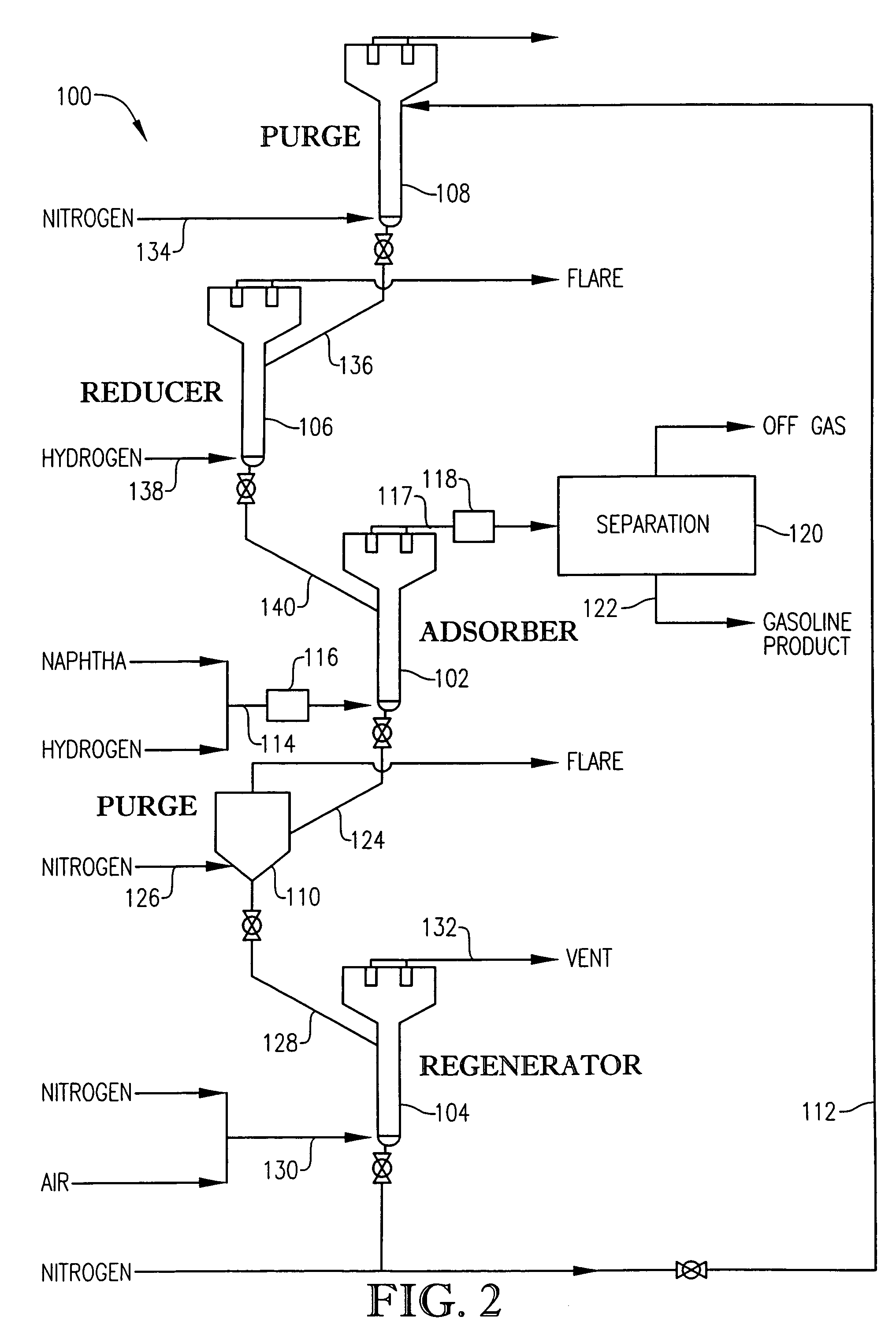Desulfurization with octane enhancement
- Summary
- Abstract
- Description
- Claims
- Application Information
AI Technical Summary
Benefits of technology
Problems solved by technology
Method used
Image
Examples
example 1
(Comparative)
[0065]In this example, the above-described pilot plant 100 was used to conduct three comparative desulfurization runs (Runs 1–3) using only the base sorbent. Comparative Run 1 was performed at an adsorber temperature of 775 ° F. Comparative Run 2 was performed at an adsorber temperature of 800° F. Comparative Run 3 was performed at an adsorber temperature of 825 ° F. Table 6 shows the results for Comparative Runs 1, 2, and 3.
[0066]
TABLE 6Base Sorbent Only:Run #123Temperature (F.)775800825Product Sulfur (ppmw)35.8045.1063.10Octane Loss0.570.09−0.20Net C3− (wt %)0.100.180.20Net C4− (wt %)0.190.300.50H2 Consumption (calc) (scf / bbl)56.8041.5043.90Delta Reid Vapor Pressure (RVP)−0.030.03−0.10Feed API52.0951.7451.74Feed RVP5.355.245.24Feed Specific Gravity (SG)0.770.770.77Product API52.7252.3251.98Product RVP5.325.275.14Product SG0.770.770.77Vol % Loss0.000.000.36% Vol Retained100.00100.0099.64
example 2
(5% High Activity)
[0067]In this example, three test runs (Runs 4–6) were performed with 5 weight percent of the High Activity Catalyst being added to the base sorbent system. Test Runs 4, 5, and 6 were conducted at adsorber temperatures of 775 ° F., 800° F., and 825° F., respectively. Table 7 shows the results for Test Runs 4, 5, and 6, as well as Comparative Runs 1, 2 and 3 which were conducted at the same temperatures.
[0068]
TABLE 7Sorbent + 5 wt %Base Sorbent Only:Hi Activity Catalyst:Run #123456Temp (F.)775800825775800825Prod Sulfur (ppmw)35.8045.1063.1036.4047.2058.20Octane Loss0.570.09−0.20−0.69−1.10−1.25Delta Octane (from Base)1.261.191.05Net C3− (wt %)0.100.180.201.401.662.10Net C4− (wt %)0.190.300.503.654.315.40H2 Consump (calc) (scf / bbl)56.8041.5043.9077.1057.6058.00Delta RVP−0.030.03−0.100.400.690.93Feed API52.0951.7451.7452.5251.9852.32Feed RVP5.355.245.245.415.245.33Feed SG0.770.770.770.770.770.77Product API52.7252.3251.9854.0154.2255.17Product RVP5.325.275.145.815.936.2...
example 3
(10% High Activity)
[0069]In this Example, two Test Runs (7 and 8) were performed with 10 weight percent of the High Activity Catalyst being added to the base sorbent system. Test Runs 7 and 8 were performed at adsorber temperatures of 775 ° F. and 825° F. Table 8 shows the results for Test Runs 7 and 8, as well as Comparative Runs 1 and 3 which were conducted at the same temperatures.
[0070]
TABLE 8Sorbent + 10 wt %Base Sorbent Only:Hi Activity Catalyst:Run #1378Temp (F.)775825775825Prod Sulfur (ppmw)35.8063.1040.0065.50Octane Loss0.57−0.20−0.76−1.48Delta Octane (from Base)1.331.28Net C3− (wt %)0.100.201.602.60Net C4− (wt %)0.190.503.806.40H2 Consump (calc) (scf / bbl)56.8043.9071.8045.90Delta RVP−0.03−0.100.500.97Feed API52.0951.7452.2452.22Feed RVP5.355.245.275.29Feed SG0.770.770.770.77Product API52.7251.9853.9654.79Product RVP5.325.145.776.26Product SG0.770.770.760.76Vol % Loss0.000.362.905.09% Vol Retained100.0099.6497.1094.91% Vol Retained × Delta Octane129.14121.48% Vol Loss per O...
PUM
| Property | Measurement | Unit |
|---|---|---|
| Temperature | aaaaa | aaaaa |
| Temperature | aaaaa | aaaaa |
| Temperature | aaaaa | aaaaa |
Abstract
Description
Claims
Application Information
 Login to View More
Login to View More - R&D
- Intellectual Property
- Life Sciences
- Materials
- Tech Scout
- Unparalleled Data Quality
- Higher Quality Content
- 60% Fewer Hallucinations
Browse by: Latest US Patents, China's latest patents, Technical Efficacy Thesaurus, Application Domain, Technology Topic, Popular Technical Reports.
© 2025 PatSnap. All rights reserved.Legal|Privacy policy|Modern Slavery Act Transparency Statement|Sitemap|About US| Contact US: help@patsnap.com



